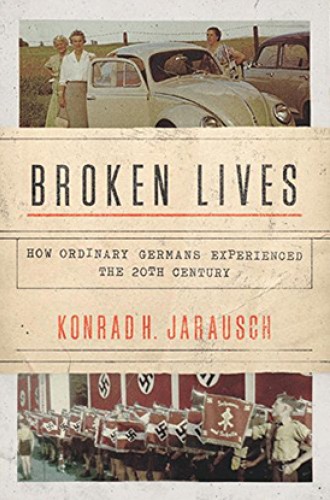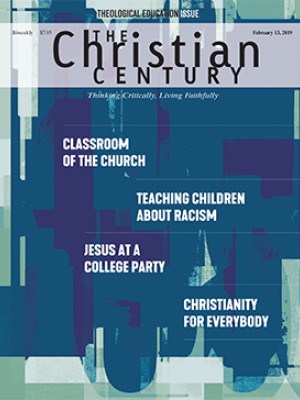Coming of age during the rise of Hitler
A history of the 20th century told by ordinary Germans.
When my grandfather retired, he immersed himself in two tasks: raising money for his alma mater, Caltech, and writing three volumes of memoirs. His life was typical for a businessman during the postwar boom, so the contents of the memoirs do not shock. They include stories about education, war service, family, deep-sea fishing, decadent office parties, and his ascent to being a high-level executive in one of the largest corporations in America. The memoirs had to be privately published, and I doubt that anyone—other than myself and a few relatives—has ever read them. It’s possible that one day some historian researching the social world of American capitalism will recognize them as a superb source.
Konrad Jarausch, perhaps the most influential Anglophone historian of modern Germany, has built his newest book out of such memoirs. Jarausch seized on the idea after an anonymous Amazon reviewer with the ego to nickname himself “Spinoza” trolled Jarausch’s earlier book Out of Ashes: A New History of Europe in the Twentieth Century (Princeton, 2015) and criticized it for concentrating on high politics at the expense of “experience on the streets.” Broken Lives responds to this criticism by putting “ordinary people back into the well-known narrative of major events . . . [in] a sustained look at unexceptional lives.”
Read our latest issue or browse back issues.
Jarausch’s book is a prosopography. He examines the reminiscences of 82 Germans (not all of them German citizens), born during the Weimar Republic (1919–1933) who wrote autobiographies in old age, usually at some point after 1989. These memoirists are mostly normal folks: professors, pastors, bankers, housewives, Protestants, Catholics, and Jews, from all over German-speaking Europe. I recognized the name of only one—intellectual historian Peter Gay. A number of the sources are personal friends of Jarausch. (Jarausch lived the first two decades of his life in West Germany, but he was born seven years too late to serve as a source for his own book.)
With so many memoirs, I had trouble recalling who was who and missed the overall life arc of any particular memoirist. The book may have been easier to read—though less historically rigorous—if Jarausch had focused on a few especially rich autobiographies, rather than pulling from so many.
Of course, no book studying the memoirs of “ordinary” people can ever truly be about ordinary people. Ordinary people do not write memoirs. To write an autobiography in retirement, you have to be like my grandfather: long-lived, leisured, well-off, nostalgic, literary-minded, able to set time-consuming tasks for yourself and persevere to complete them, and connected to an audience that will read your book (even if that audience is just relatives). In Jarausch’s sample, over half the memoirists are upper middle class, especially male Protestants formerly employed in professions that demand writing abilities such as law, ministry, theology, and journalism. A more accurate subtitle might be “how educated German professionals experienced the 20th century.”
That said, Jarausch greatly succeeds at helping readers envision what it was like to attempt a normal life in the midst of depression, war, revolution, and tyranny. The chapters on memories of the Holocaust and World War II are moving and graphic.
Broken Lives abounds with startling arguments. Jarausch shows, for instance, that most of his memoirists—even ones who became passionate antifascists—enjoyed their days in the Hitler Youth. The Nazi Party designed the Youth to indoctrinate, but the teenagers who were pressured into joining viewed it mainly as an opportunity to flirt, play outdoors, and get away from parents. Another surprise is how cheery memories of the Weimar Republic were, Weimar being now a byword for aimlessness and failure. But Jarausch suggests that the government was winning the hearts of ordinary Germans—and would have succeeded if only the Great Depression had been delayed a few years.
Broken Lives is well researched and accessible, even for those with little prior knowledge of German history. But I also found it incomplete because Jarausch barely discusses a central issue of 20th-century Europe: secularization. No experience was once more ordinary and unexceptional than attending a church or synagogue. As Jarausch rightly notes, when the memoirists were born, for many people being German meant being Christian. Most Germans “continued a nominal affiliation, baptized their children, and celebrated church holidays.” “Only essential tasks were completed on Sunday,” for the Sabbath was time for church in the morning followed by “conviviality in beer-gardens” in the afternoon.
Jarausch’s memoirists include four Protestant pastors and several devout Catholic laypersons (though no priests or rabbis). Even so, references to churches and synagogues decline as the book goes on. According to Jarausch, by the 1950s Germany had become “a secular world” and “calls for spiritual values and moral regeneration faded like ghosts in the glare of the new material consumption” of the economic miracle. Europe had discovered happiness and blinked.
What transformed secularism—a form of life that, until the 20th century, appealed to only a tiny minority—into the new default? It’s unfair to expect Jarausch to answer this question in a few pages. But he could have described which of his 82 memoirists lost their faith, which ones did not, and what reasons they gave for either decision. Secularization was a transformation of ordinary life as radical and as rapid as any discussed in this book. Yet Jarausch tells us little about why this cohort grew “skeptical of promises of salvation” or what might make them leap in faith again.







